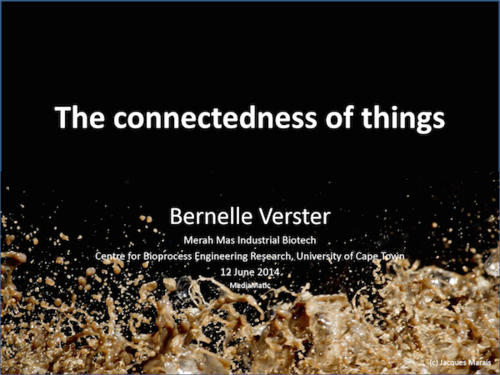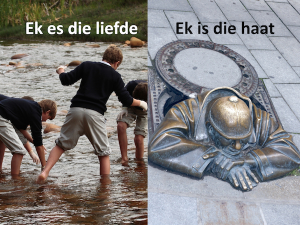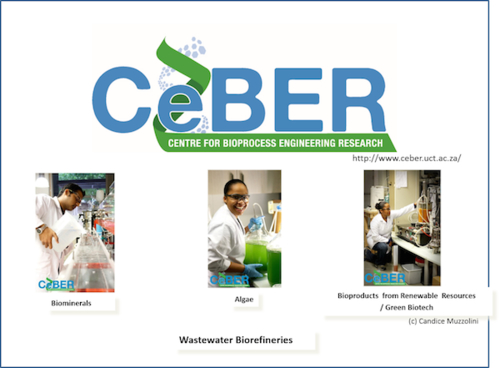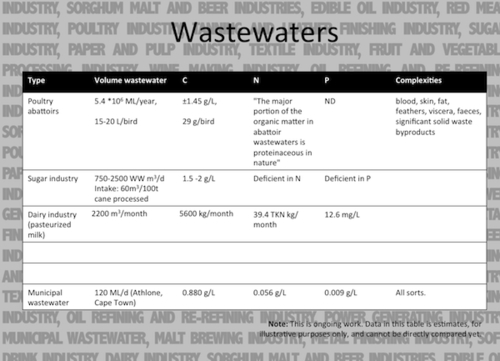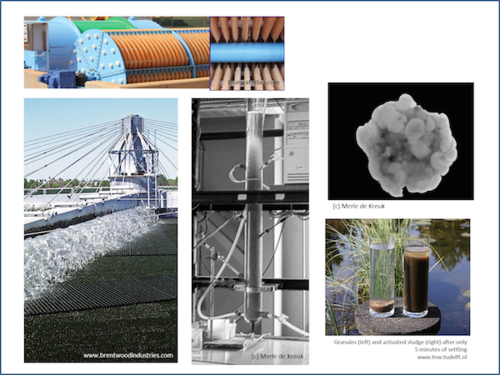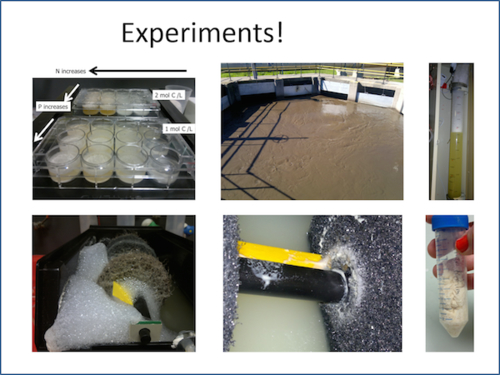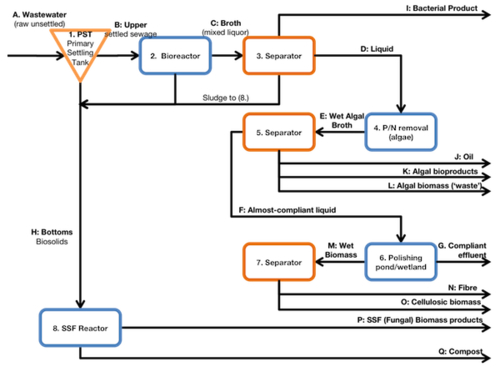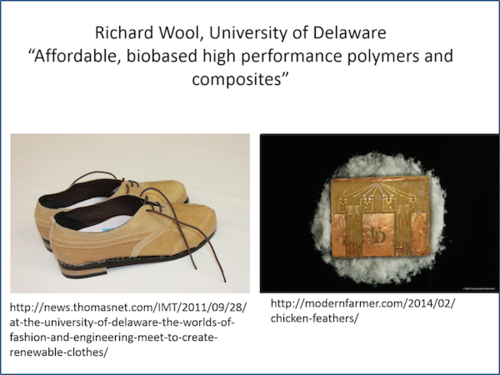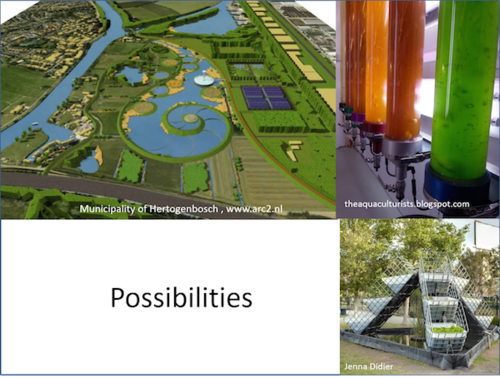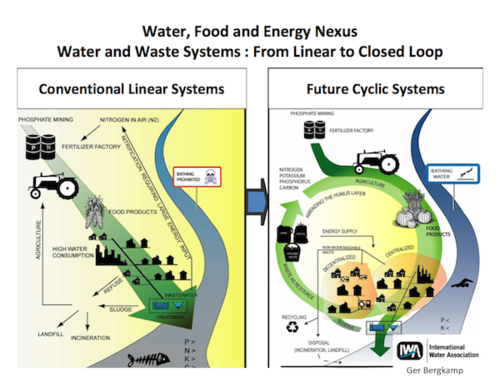...
Ek es die liefde
Ek es die haat
Ek es die hoer
Ek es die staat
...
Haal een van ons weg
Dan is die ander niks wert
Ek es die toeval
Ek es die lot
Ek es die duiwel
En ik ben God
Ons is al saam van die begin van die tijd
Ons ken mekaar al een eeuwigheid
Ons is een tweeling uit diezelfde buik
Jij gaan nooit weet wie is wie
Als jij niet goed kijk
We often consider water as good, and waste as bad. We have a highly emotional connection to water, and are disgusted by waste like shit. We consider water sensual, but the people and institutions who have to look after our water bodies, and our wastes, as almost unmentionable. We consider water as life itself, but yet, it is the nutrients in water, the impurities that constitute life. You can't separate them and still have the miracle that is this planet.
We consider rain or even floods as coincidental, a lucky occurrence, a good omen, a blessing, but wastes and green, rotting rivers and dams as fate, or at best punishment for evil deeds, an inconvenient, undesirable side effect. In short, I would say that we equate wastes with evil, with the devil, and our religious reverence to water, makes it holy, godlike.
And yet, these two have been together forever, and the only way we can make sense of these two 'extremes' coming together is in a cycle - or an ecosystem. In reality you have to look really closely to tell them apart, and understand how they are related. That is what we at the Centre for Bioprocessing Engineering Research, CeBER, do.
At CeBER we focus on many things, with the overarching focus to try to make the biotech advances make sense to engineers, and to make it economically, socially and environmentally viable. Today I want to focus on three things that I think has the most potential for collaboration with artists, designers, creatives and other interested people. These are Biominerals, Algae, and my work, Wastewater Biorefineries.
Biominerals
One of the main research areas in CeBER is bioleaching, a process where microbes are used as biocatalysts to convert metal compounds into their soluble forms. This leaching process is an alternative economical method for the recovery of metals such as copper, zinc and gold from low-grade mineral ores, with low investment and operation costs.
Algae
CeBER focuses on algal cultivation, harvesting and processing for the production of carotenoids, nutraceuticals, lipids and energy products. Maximising lipid productivity through optimising the uptake of light and CO2 is critical to systems scale-up. Through the biorefinery concept, inventory analysis and Life Cycle Assessment (LCA), we identify key contributions required for feasible algal processes.
Wastewater biorefineries
“A biorefinery is characterised as an explicitly integrative, multifunctional overall concept that uses biomass as a diverse source of raw materials for the sustainable generation of a spectrum of different intermediates and products (chemicals, materials and/or bioenergy/fuel) whilst including the fullest possible use of all raw material components.” - EU definition (Timoteo de la Fuente)
What do we mean with wastewater? Wastewater is basically any sort of dirty water. It can range from complex municipal wastewaters, to a variety of industrial wastewater sources that may be more defined. We can see from the data on the slide above that wastewaters can be grouped according to three factors: volume, concentration, and complexity. For the most part these waters have huge flows, in the order of mega liters every day, and can be quite dilute, with the most common components in the order of milligrams per liter. What makes them hard to deal with is the level of complexity - these waters mostly tend to be highly variable, changing concentration and perhaps also composition the whole time, and they tend to be 'receptacles', meaning that the compounds that make their way into the water is not controlled, so you can get all sorts of heavy metals or toxic chemicals in these waters. Just as these are poisonous to us, they can possibly wreck havoc with microbial populations in your bioprocess as well. Wastewater biorefineries involve the recovery of valuable products, including water and nutrients, from wastewater as an integrated system rather than a unit process, and potentially provide a link between the users of water and those responsible for its management where resources are recovered in closed loop cycles.
I don't want to go into details here, but the reactors - the homes the biological creaturs live in - is key to this whole concept. If you are interested, I have posted the link for the presentation I gave at the Renewable Resources and Biorefineries (RRB) conference last week (5 June 2014) at the bottom of this post. Below are some pictures of how these reactors may look like when they are working at larger scales, and beneath that, some pictures of my experiments - quite different!
This image above is a process flow diagram, and shows what types of potential products can be gained from wastewater biorefineries, and where they might come from. This is rather complicated, and the basis for my PhD. I won't bother to explain what it all means, I just want you to see that there are lots of opportunities!
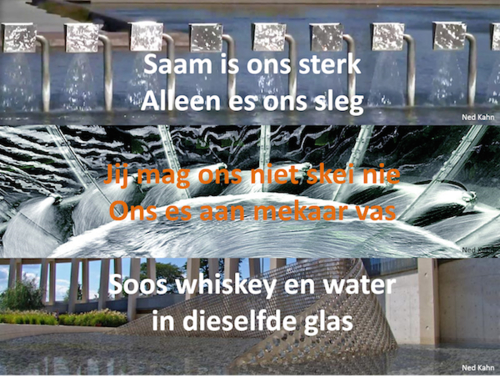
...
Saan es ons sterk
Alleen es ons sleg
Jij mag ons niet skie nie
Ons es aan mekaar vas
Soos whiskey en water in dieselfde glas
Why am I here, speaking to you, creatives and passionate people who may have no background or even interest in wastewater? I want to share my dream with you, and I need your help. I strongly believe that scientists, and engineers, on their own, achieve very little. Sure, our stuff works (most of the time), but we can't make beautiful solutions, things that draw people in and make them feel comfortable. I think it is a HUGE opportunity to have soooo much water at treatment plants that we can do the most beautiful things with. Imagine a fully functional engineering plant - a wastewater biorefinery - that is so safe and so beautiful that the public, animals, birds are allowed on it. Imagine landscape art everywhere, cascading waterfalls and fountains, and even watersports perhaps! Yes, these treatment plants can treat water to such a clean level, if well managed. And if it is in the public eye and mind, then it creates so much more incentive to be well managed! Plus the products we can produce from the waste can provide the necessary income, along with other activities like tourism, sport, and cultural activities, perhaps, to maintain the site financially. Things work better when people are connected. Water, and the nutrients and things in it, works as a connected cycle: We should too.
I now want to show you just some of the products that can be produced from wastewaters (most of these are at very early research scale), and then some landscape art pieces with water from around the world. The slide above shows three examples of water art from Ned Kahn.
Lastly, I want to share my approach. I very much believe in the open source movement. I do not support patents. I believe there are alternative ways that can complement our current approaches. These include the Creative Commons movement, the Arduino movement, the thinking behind Biomimicry... and others, like the OpenMaterials initiative, and even the Misfit Economy.
Ons maak samen oorlog
Ons maak saam plesier
Ek es van Holland
En ek es van hier
It is said that the next wars will be about water. I think that may be so, but it's more useful to have fun with water, together. The technologies are there, and we can share the skills. I think South Africa and the Netherlands have a particularly rosy future ahead of us - we both have to be very conscious of water, for complementary reasons. We have a historic partnership, for better or for worse, we understand each other.
So, to end, I would like you to think back on how this talk started, and turn some of those ideas upside down, play with your preconceptions a bit, dream of what could be.
Ek es die toeval
En ek es die lot
Ek es die duiwel
En ek es God
OK, OK, some of that was for dramatic effect. I don't think we need to hate anything, it's part of the bigger picture. What I DO want, is to move away from this either/or attitude, and move into both...and.
Below is one example how we can think about this, that Ger Bergkamp shared at the African Utility Week in 2012.
Lyrics from Stef Bos 'Die duiwel en god'
CeBER website: www.ceber.uct.ac.za
RRB presentation: merahmas.co.za/blog/reactors
Do you want to know more about Bio Technology? Visit our upcoming Bio Me festival and symposium.
